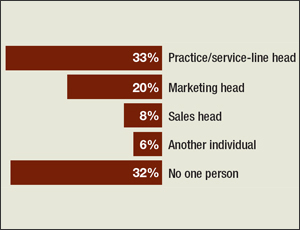A disconnect between marketing and business development can always make it challenging for AEC firms to get work. But the problem can be acute during difficult economic times, said marketing experts at a think tank in New York City on Nov. 13. The event was organized by the SMPS Foundation, a nonprofit that promotes research and education.

“The most vexing question” is why marketing and business-development professionals are not working well together, said panelist Suzanne C. Lowe, president of Expertise Marketing LLC, Concord, Mass. “A huge part of it” is because roles are not clearly defined and responsibility and accountability may be split, she explained. Lowe’s recently published book, “The Integration Imperative,” cites a study that found no one person is in charge of “demand creation” in almost a third of professional-services firms. One attendee noted that, in hard times, firms try to hire a “combo package,” but employees are not always trained to do multiple jobs.
Symptoms of the disconnect include a lack of belief in a “cohesive client-relationship philosophy,” said William Viehman, chief marketing officer in the Atlanta office of Perkins + Will. Sheryl Maibach, CMO for Barton Mallow, Southfield, Mich., sees “value metrics” as being the key. She said the disconnect shows when people “start questioning value—whether it is social media and the tie to business success or chasing a new market.”
“It all gets down to what is the strategy of the firm and what is your client-acquisition strategy?” said David Harkleroad, CMO for brand-strategy consultant Hay Group, Philadelphia. Everyone can argue about “what is marketing, what is sales, and what is business development, but I do not know that you can separate them,” he said.
For marketers who feel they are “stuck and they cannot get the attention of their managers because there is too much panic going on, the best thing to get everyone to calm down is to start out with real facts,” Lowe said. “You need facts to make the point that there is merit to targeting and segmentation and to figuring out who are your best clients.”
Viehman agreed, adding, “The steroid that enhances panic is lack of information. The antidote for that is to go out and talk to targeted clients. There is an old adage: If you go out and ask for a job, you may get advice; but if you ask for advice, you may get a job.”





Post a comment to this article
Report Abusive Comment